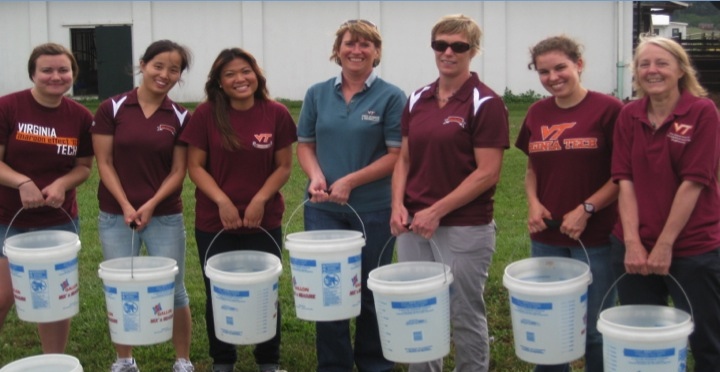How much water does it take to make a gallon of milk?

The following blog was submitted by Adam Oliphant, a graduate student in Forestry, as part of the requirements for GRAD 5414 Water for Health Seminar Interdisciplinary Seminar. This course examines emerging interdisciplinary issues related to the chemistry, microbiology, engineering and health aspects of drinking water.
How much water does it take to make a gallon of milk?
The short answer is about 4 gallons according to the Innovation Center for U.S. Dairy’s 2012 report; the larger answer focuses on why and what impact milk production has on the environment.
According to the U.S. Dairy report, 95% of the water required to produce milk is used to grow cow feed. On average across the United States, 35% of the feed is produced by dairy farmers, while 65% comes from other farmers.
All this water comes from somewhere and the massive production of feed and milk comes at a price. A group of Texas ranchers reported, in the white paper Agricultural Water, therole that water has in agriculture in western states and what they see in the future of water in agriculture. A series of recommendations including repairing the aging water distribution network and increasing university research on improving irrigation strategies and water efficient plant varieties was proposed. The paper highlighted that water demand was greater than supply, especially in Texas, and that the amount of water available for agriculture was shrinking due to increasing demand from cities, oil extraction, and environmental flows for endangered species.
The other 7 gallons are consumed by the cows themselves. You may wonder if the minerals found in water the cows drink are present in milk. A study performed at Virginia Tech by Mann et al. in 2013 and published in Journal of Dairy Science evaluated the impact that iron concentrations in the water the cows drank had on the milk they produced. For a week cows were given water with 0, 2, 5, and 12.5 ppmiron. For comparison the USEPAsecondary maximum contaminant level for iron is 0.3ppm. After a week there was a subtle increase in iron in the milk produced by the cows that consumed the 12.5 ppm Fe water.
Another study presented in the The Virginia Dairyman surveyed cows at 13 farms across Virginia to see what impact long term iron and other metal concentrations in drinking water had on milk produced. Iron concentrations ranged from 0.004 to 0.9 ppm Fe with most farms reporting less than 0.3 ppm. Overall there was no significant difference in milk produced from cows that drank low(< 0.3 ppm) and high iron water. However, there was an increase in the quantity of milk produced with increasing water iron concentration. This finding was attributed to other factors such as the age and health of the cattle.
The white paper, Agricultural Water, identifies that forward thinking research on water in agricultural production and downstream influence is critical to preparing for the future. The four articles discussed herepresent the rolethat water has on dairy production in the United States. These articles provide a perspective that examines theresearch effect of iron on milk production of several cows in Virginia compared to the white paper, which examines the future of water security across the Western United States. The writings cover the impact of mineral concentrations in water consumed by cows on milk production through Virginia and the environmental impact of dairy cows across the United States, respectively. This range of articles demonstrate the value of varying scope and technical detail in order to reach the broadest audience, which is important to issues involving public policy.
References:
“Agricultural Water: Protecting the Future of Our Nation, Agricultural White Paper” King Ranch Institute for Ranch Management, Texas A&M University- Kingsville, October 2012
“Can Iron in Water Affect Milk Production?” G. R. Mann, K. Phetxumphou, E. Gibson, C. Martel, S. E. Duncan, A. D. Dietrich, R. James, and K. Knowlton, The Virginia Dairyman,June 2013
“Effects of mineral content of bovine drinking water: Does iron content affect milk quality?” G. R. Mann, S. E. Duncan, K. F. Knowlton, A. D. Dietrich, and S. F. O’Keefe, Journal of Dairy Science Vol. 96 No. 12, 2013
“U.S. Dairy’s Environmental Footprint, A Summary of Findings 2008-2012” Innovation Center for U.S. Dairy, 2013"


